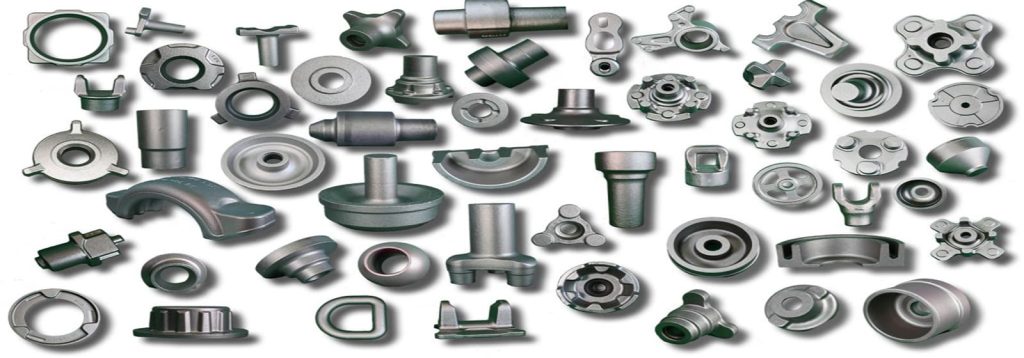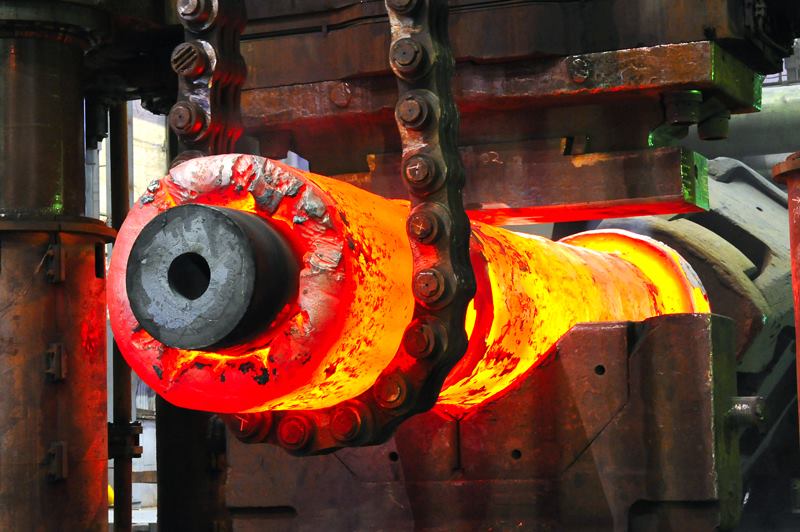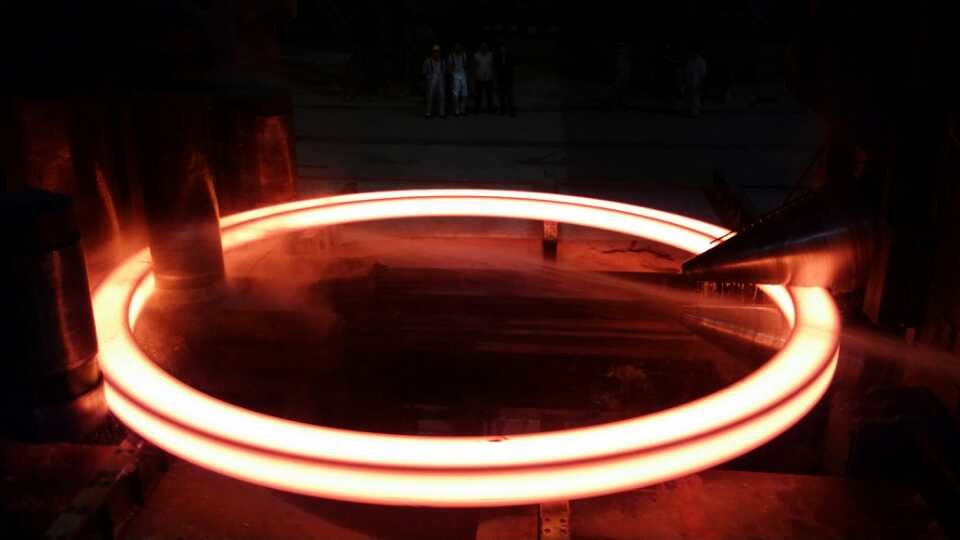What are the Different Types of Forging Processes?
Different types of forging processes are used to fabricate and manipulate metal parts to meet a variety of application requirements. The main forging manufacturing methods include Impression Die Forging, Open Die Forging, Cold Forging, and Seamless Rolled Ring Forging. Each process locally applies compressive forces, enabling effective part creation for an array of applications.

Impression Die Forging, also known as closed die forging, encompasses a process that involves dies entirely enclosing the base material, simplifying its transformation into the desired form. This method demands higher compressive forces compared to its counterparts to ensure total filling of die cavities, resulting in a completed part.
Impression Die Forging Benefits:
- Minimization of metal waste
- Increased production rates
- Augmented fatigue and impact resistance
- Parts with superior strength-to-weight ratios

Cold Forging facilitates the creation of parts and components with improved surface finishes and precise dimensional tolerances. Differing from traditional forging methods, cold forging does not rely on high-temperature conditions but utilizes colder temperatures to shape components. It serves an array of applications including the fabrication of shafts, hollow parts with shafts and stems, and distinct or cup-shaped configurations.
Cold Forging Benefits:
- Exceptional tolerances
- Refined surface finish quality
- Cost-effective
- Minimal to no material loss
- Improved yield and tensile strength
- Enhanced die longevity, compared to heat forging dies
Cold Foring Materials: - Gold
- Silver
- Copper
- Brass Custom Forged Parts

Open Die Forging, also known as hammersmith forging, forms parts by application of direct force. A hammer impacts the workpiece, which is held by two flat dies, deforming it into the desired shape. The open die forging method is named as such because the workpiece is not entirely enclosed by the dies. In this context, the dies act more as tools than as shaping molds.
Open Die Forging offers a product weight range from a few pounds to over 150 tons, proving ideal for parts that weight over 200,000 lbs. and reach over 80 feet in length.
Open Die Forging Benefits:
- Enhanced fatigue resistance
- Continuous grain flow
- Extended part lifespan
- Reduced development voids
- Finer grain sizes

Seamless Rolled Ring Forging, generally carried out by punching a hole in a thick, round piece of metal and then rolling and squeezing it, creating a thin ring. This method is suitable for producing ring diameters from a few inches to 30 feet. Contrasting to other forging types, rolled ring forging employs curved dies rather than flat ones for forming ring-shaped components.
Seamless Rolled Ring Forging Benefits:
- Superior structural integrity
- Increased strength levels
- Controlled directional flow
- Eliminates welding, inclusions, and porosity
We can delve deeper on the variety of materials typically used in cold forging processes, and look more closely at the advantages of Seamless Rolled Ring Forging.
In Cold Forging, a diverse range of materials can be used. This type of forging is compatible with metals like gold, silver, copper, and brass, broadening the scope for numerous applications. It is worth noting that the choice of material is essential as it directly affects the durability, and functionality of the resulting part.
Cold Forging Material Options:
- Gold
- Silver
- Copper
- Brass
Cold forged parts offer a combination of strength, reliability, and precision largely unparalleled by other manufacturing processes. With superior surface finish quality, tight tolerances, and economical nature of the process, it can render sturdy and reliable parts in vast quantities with minimal waste. Furthermore, cold forging can extend the lifespans of dies used in the process due to the reduced temperatures, compared to heat forging dies, ultimately lowering operational costs.
The Seamless Rolled Ring Forging process, as indicated earlier, involves punching a hole into a thick, round metal piece and then rolling and squeezing it into a thin ring. This method, utilized for rings varied in diameters from a few inches to 30 feet, uses curved dies instead of flat ones, forming ring-shaped components with superior structural integrity.
Seamless Rolled Ring Forging boasts of many advantages, such as:
- Enhanced structural integrity: The process delivers products with unparalleled strength and durability.
- Increased strength: The localized compressive forces yield higher strength levels.
- Controlled directional flow: This facilitates alignment and orientation of the grain flow according to the shape of the part.
- Elimination of defects: The process eliminates issues such as welding inconsistencies, inclusions, and porosity.
Each of these forging processes carries with it a unique set of benefits and limitations. Therefore, choosing the appropriate method will depend on the specific requirements of the component being created. To select the right process, it is essential to take into account such variables as desired shape, size, material type, and ultimate application of the piece.
